Discover 35 hidden attractions, cool sights, and unusual things to do in Seoul (South Korea). Don't miss out on these must-see attractions: Changdeokgung, Gyeongbokgung, and Deoksugung. Also, be sure to include National Museum of Korea in your itinerary.
Below, you can find the list of the most amazing places you should visit in Seoul (Seoul).
Table of Contents
Changdeokgung
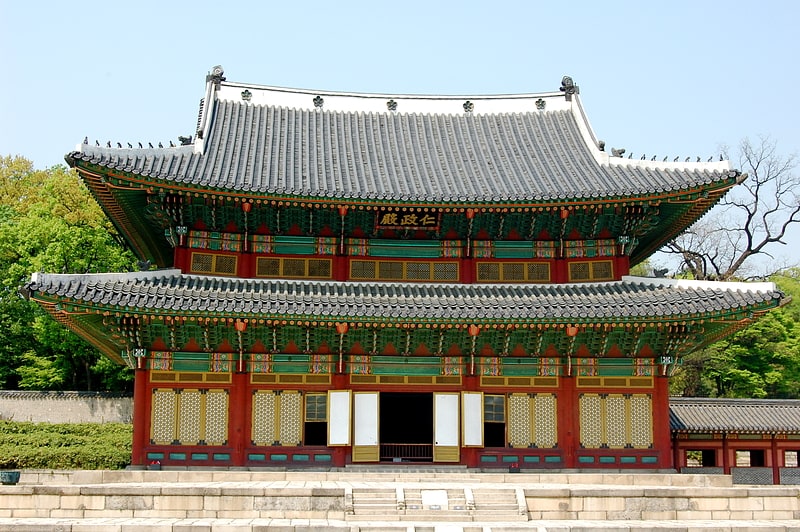
Also known as: 창덕궁
Joseon dynasty palace and gardens. Changdeokgung, also known as Changdeokgung Palace or Changdeok Palace, is set within a large park in Jongno District, Seoul, South Korea. It is one of the "Five Grand Palaces" built by the kings of the Joseon Dynasty. As it is located east of Gyeongbok Palace, Changdeokgung—along with Changgyeonggung—is also referred to as the "East Palace".
Changdeokgung was the most favored palace of many Joseon kings and retained many elements dating from the Three Kingdoms of Korea period that were not incorporated in the more contemporary Gyeongbokgung. One such element is the fact that the buildings of Changdeokgung blend with the natural topography of the site instead of imposing themselves upon it. Like the other Five Grand Palaces in Seoul, it was heavily damaged during the Japanese occupation of Korea (1910–1945). Currently, only about 30% of the pre-Japanese structures of the East Palace Complex (Changdeokgung together with Changgyeonggung) survive.[1]
Address: 99 Yulgok-ro, Waryong-dong, 110-360 Jongno-gu (종로구)
Gyeongbokgung
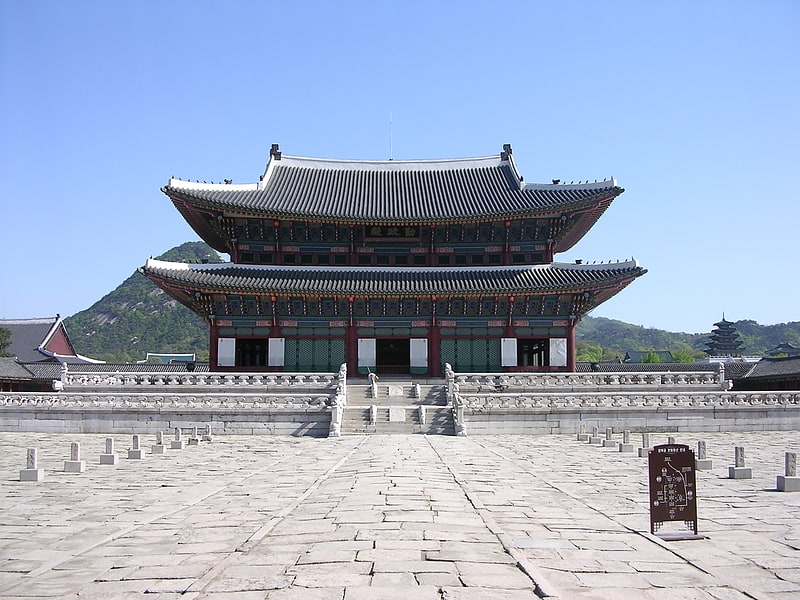
Also known as: 경복궁
Historic palace with tours and a museum. Gyeongbokgung, also known as Gyeongbokgung Palace or Gyeongbok Palace, was the main royal palace of the Joseon dynasty. Built in 1395, it is located in northern Seoul, South Korea. The largest of the Five Grand Palaces built by the Joseon dynasty, Gyeongbokgung served as the home of Kings of the Joseon dynasty, the Kings' households, as well as the government of Joseon.
Gyeongbokgung continued to serve as the main palace of the Joseon dynasty until the premises were destroyed by fire during the Imjin War (1592–1598) and abandoned for two centuries. However, in the 19th century, all of the palace's 7,700 rooms were later restored under the leadership of Prince Regent Heungseon during the reign of King Gojong. Some 500 buildings were restored on a site of over 40 hectares. The architectural principles of ancient Korea were incorporated into the tradition and appearance of the Joseon royal court.
In the early 20th century, much of the palace was systematically destroyed by Imperial Japan. On January 21, 1963, it was designated as a cultural property. Since the 1990s, the walled palace complex is gradually being restored to its original form. Today, the palace is arguably regarded as being the most beautiful and grandest of all five palaces. It also houses the National Palace Museum and the National Folk Museum within the premises of the complex.[2]
Address: 161 Sajik-ro, Jongno 1(il).2(i).3(sam).4(sa), 110-050 Jongno-gu (종로구)
Deoksugung
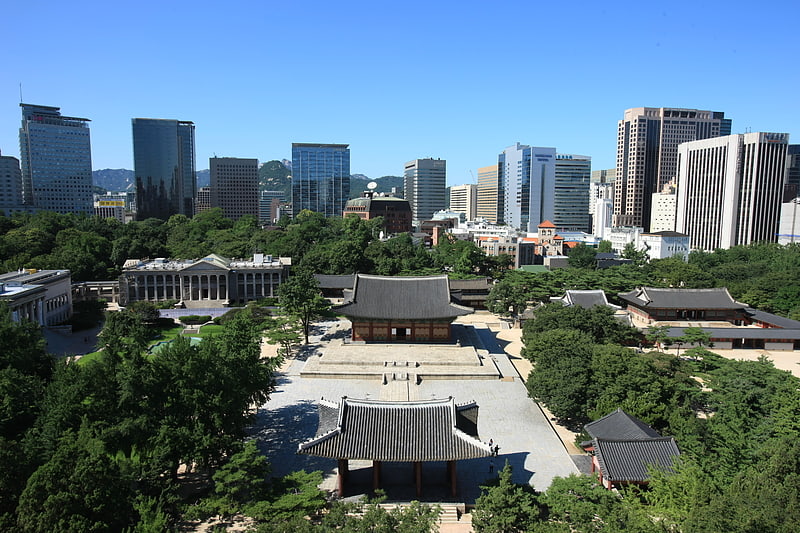
Also known as: 덕수궁
Palace with a Royal Guard ceremony. Deoksugung, also known as Gyeongun-gung, Deoksugung Palace, or Deoksu Palace, is a walled compound of palaces in Seoul that was inhabited by members of Korea's Royal Family during the Joseon monarchy until the annexation of Korea by Japan in 1910. It is one of the "Five Grand Palaces" built by the kings of the Joseon Dynasty and designated as a Historic Site. The buildings are of varying styles, including some of natural cryptomeria wood), painted wood, and stucco. Some buildings were built of stone to replicate western palatial structures.
In addition to the traditional palace buildings, there are also forested gardens, a statue of King Sejong the Great and the National Museum of Art, which holds special exhibitions. The palace is located near City Hall Station.
Deoksugung, like the other "Five Grand Palaces" in Seoul, was heavily damaged during the colonial period of Korea. Currently, only one third of the structures that were standing before the occupation remain.
Deoksugung Palace is special among Korean palaces. It has a modern and a western style garden and fountain. The Changing of the Royal Guard, in front of Daehanmun (Gate), is a very popular event for many visitors. The royal guard was responsible for opening and closing the palace gate during the Joseon Dynasty. Outside of the palace is a picturesque road with a stone wall.
The Deoksugung Stonewall walkway is at the heart of a popular urban myth in Seoul, as it is said that all couples who walk down this road are fated to break-up.[3]
Address: 99 Sejong-daero, Jeong-dong, 100-120 Jung-gu (중구)
National Museum of Korea
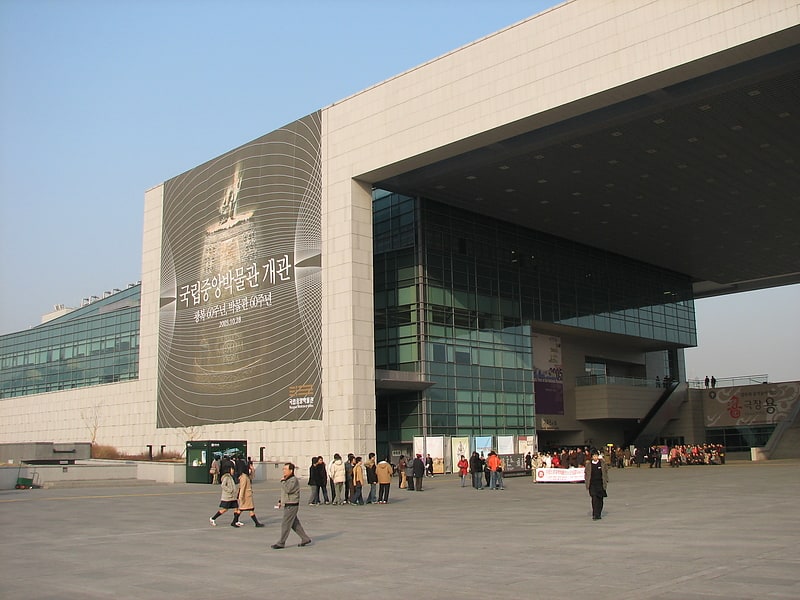
Also known as: 국립중앙박물관
Modern home of Korea's cultural exhibits. The National Museum of Korea is the flagship museum of Korean history and art in South Korea and is the cultural organization that represents Korea. Since its establishment in 1945, the museum has been committed to various studies and research activities in the fields of archaeology, history, and art, continuously developing a variety of exhibitions and education programs.
It was relocated to the Yongsan District in Seoul in 2005. On June 24, 2021, the National Museum of Korea opened a new branch inside Incheon International Airport. Located in the boarding area of the airport in front of Gate No.22, the branch was opened in celebration of the museum's 20th anniversary.[4]
Address: 137 Seobinggo-ro, Seobinggo-dong, 140-026 Yongsan-gu (용산구)
Children's Grand Park
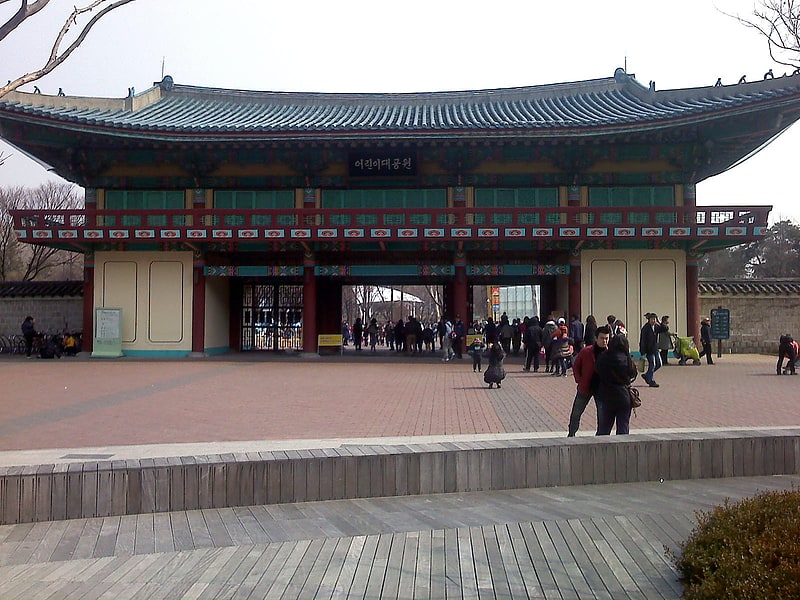
Also known as: 어린이대공원
Amusement park in Seoul, South Korea. Children's Grand Park is a park complex in Gwangjin-gu, Seoul, South Korea. Facilities at Children's Grand Park include hills and hiking trails, Zoo, garden, and an amusement park. Situated in Seoul City's Gwangjin-gu, Children's Grand Park is a leisure facility for families, offering a botanical garden, amusement facilities, and diverse performance events. Opened on a Korean holiday called Children's Day in 1973, the park is full of attractions that appeal to youngsters: Marine Animal House that exhibits seals and polar bears, a Small Animal Village, and even a Parrot Village. Nearly 62% of the park's total area of about 530,000 sq. meters consists of trees and grass and various facilities.[5]
Address: 216 Neungdong-ro, Gwangjin-gu, 04991 Seoul (광진구)
Changgyeonggung

Also known as: 창경궁
Palace in Seoul, South Korea. Changgyeong Palace is a palace located in Seoul, South Korea.
The palace was built in the mid-15th century by King Sejong for his father, Taejong. It was originally named "Suganggung," but it was renovated and enlarged in 1483 by King Seongjong, at which time it received its current name. Many structures were destroyed during Japan's multiple late 15th to 16th (1592) century attempts to conquer Korea and invade China. It was rebuilt by successive Joseon Kings but was once again largely destroyed by the Japanese in the early 20th century. This time, it was torn down methodically to make room for a modern park, a showplace for the empire, akin to Tokyo's Ueno Park.
During the Japanese colonial period, the Japanese built a zoo, botanical garden, and museum on the site. It was called "Changgyeongwon park", the "won" standing for the Korean word 'zoo'. After independence in 1945 and the turmoil and destruction of the 1950-53 Korean War, the zoo was restocked through donations of wealthy Koreans as well as gifts from foreign zoos. In 1983, the zoo and botanical garden were relocated to present-day Seoul Grand Park.[6]
Address: 185 Changgyeonggung-ro, Waryong-dong, 110-360 Jongno-gu (종로구)
National Folk Museum of Korea
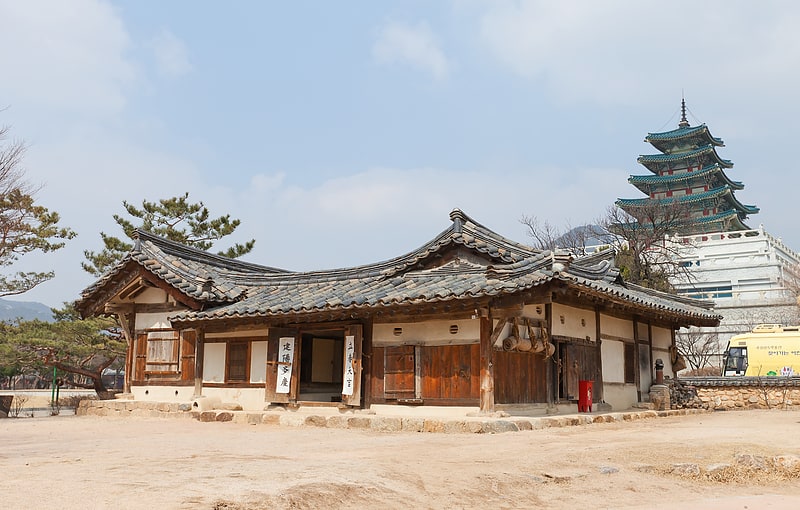
Also known as: 국립민속박물관
Museum for Korean customs and culture. National Folk Museum of Korea is a national museum of South Korea, located within the grounds of the Gyeongbokgung Palace in Jongno-gu, Seoul. It uses replicas of historical objects to illustrate the history of traditional life of the Korean people.[7]
Address: 37 Samcheong-ro, Jongno 1(il).2(i).3(sam).4(sa), 110-820 Jongno-gu (종로구)
Namsangol Hanok Village

Also known as: 남산골 한옥마을
Tours of houses built in Joseon Dynasty. Namsangol Hanok Village, also known as "A Village of Traditional Houses in the Namsan Valley", is a Korean village located in the area of Pil-dong neighborhood in Jung-gu, a central district of Seoul, South Korea where hanok or Korean traditional houses have been restored to preserve the original atmosphere of the area.
The Namsangol Hanok Village offers one the opportunity to experience a wide cross-section of Joseon-era citizenry and activities, from royalty to commoners. A great effort has been made to accurately furnish each dwelling with appropriate era and social status appointments.[8]
Address: 28 Toegye-ro 34-gil, Pil-dong, 100-272 Jung-gu (중구)
Gwangjang Market
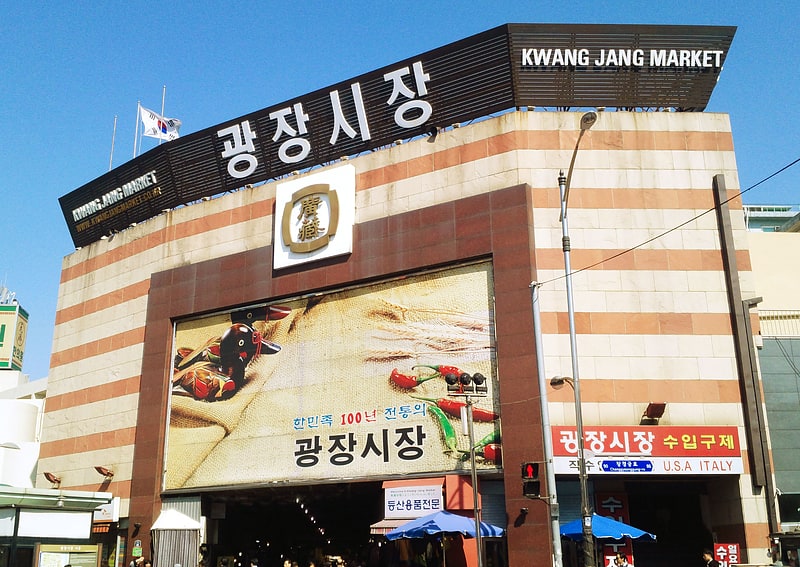
Also known as: 광장시장
Market in Seoul, South Korea. Gwangjang Market, previously Dongdaemun Market, is a traditional street market in Jongno-gu, Seoul, South Korea. The market is one of the oldest and largest traditional markets in South Korea, with more than 5000 shops and 20,000 employees in an area of 42,000 square metres. Approximately 65,000 people visit the market each day.[9]
Address: 88 Changgyeonggung-ro, Jongno 1(il).2(i).3(sam).4(sa), 110-124 Jongno-gu (종로구)
War Memorial of Korea
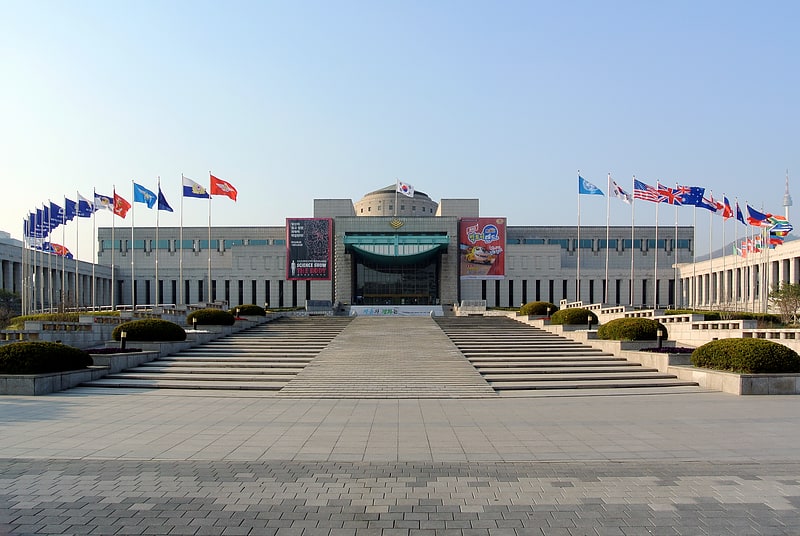
Also known as: 전쟁기념관
Museum in Seoul, South Korea. The War Memorial of Korea is a museum located in Yongsan-dong, Yongsan-gu, Seoul, South Korea. It opened in 1994 on the former site of the army headquarters to exhibit and memorialize the military history of Korea. It was built for the purpose of preventing war through lessons from the Korean War and for the hoped for peaceful reunification of North and South Korea. The memorial building has six indoor exhibition rooms and an outdoor exhibition centre displaying war memorabilia and military equipment from China, South Korea and the United States.[10]
Address: 29 Itaewon-ro, Namyeong-dong, 140-021 Yongsan-gu (용산구)
Unhyeongung
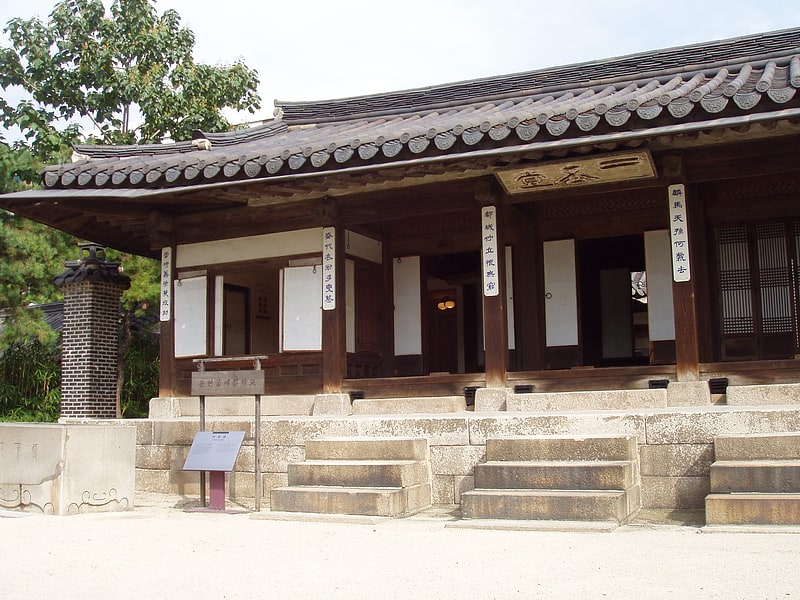
Also known as: 운현궁
Royal and political palace residence. Unhyeongung, also known as Unhyeongung Royal Residence, is a former Korean royal residence located at 114-10 Unni-dong, Jongno-gu, Seoul, Korea. It was formerly the residence of the Heungseon Daewongun a prince regent of Korea during the Joseon Dynasty in the 19th century, and father of Emperor Gojong. Gojong himself also lived in this residence until age 12 when he assumed the throne. It is currently a museum and is open to the public free of charge.[11]
Address: 114-10 Unni-dong, 110-350 Jongno-gu (종로구)
Garak Market
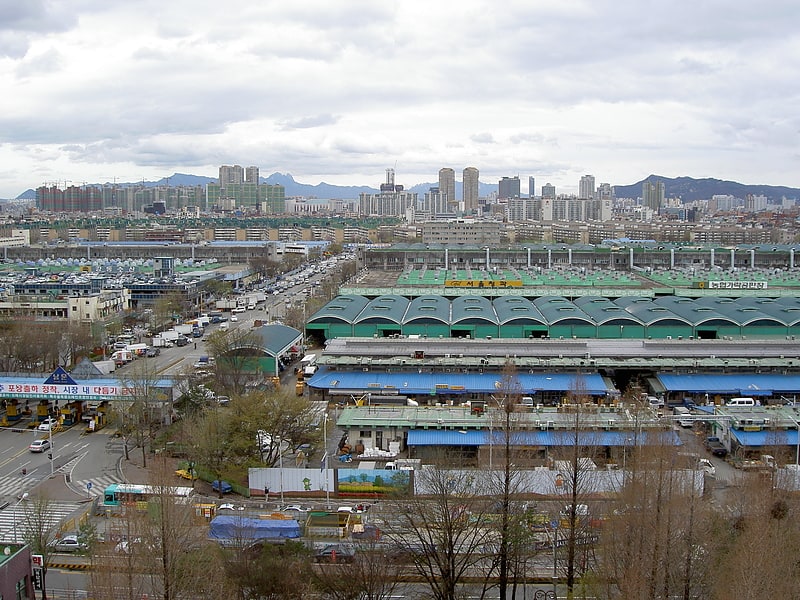
Also known as: 가락시장
Market in Seoul, South Korea. Garak Fish Market or Garak-dong Agricultural Market is an extensive farmers fish market in the neighborhood of Garak-dong in Songpa-gu, Seoul, South Korea. It is served by Garak Market station.[12]
Address: 932 Yangjae-daero, Munjeong-dong, 138-202 Songpa-gu (송파구)
N Seoul Tower
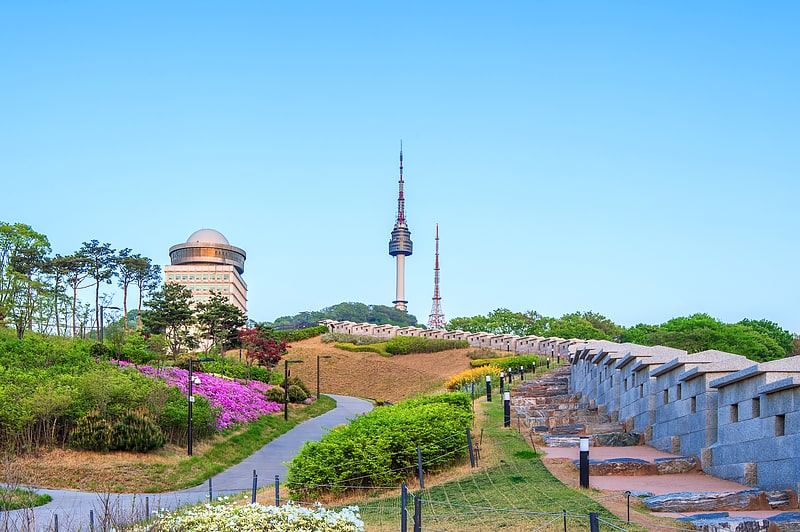
Also known as: N서울타워
Tower with city views and a restaurant. The N Seoul Tower, officially the YTN Seoul Tower and commonly known as Namsan Tower or Seoul Tower, is a communication and observation tower located on Namsan Mountain in central Seoul, South Korea. The 236-meter -tall tower marks the second highest point in Seoul.
Built in 1969, the N Seoul Tower is South Korea's first general radio wave tower, providing TV and radio broadcasting in Seoul. Currently, the tower broadcasts signals for Korean media outlets, such as KBS, MBC, and SBS.[13]
Address: 105 Namsangongwon-gil, Yongsan 2(i)ga-dong, 140-022 Yongsan-gu (중구)
Jongmyo

Also known as: 종묘
Shrine to Joseon dynasty kings and queens. Jongmyo is a Confucian shrine dedicated to the perpetuation of memorial services for the deceased kings and queens of the Korean Joseon Dynasty. According to UNESCO, the shrine is the oldest royal Confucian shrine preserved and the ritual ceremonies continue a tradition established in the 14th century. Such shrines existed during the Three Kingdoms of Korea period, but these have not survived. The Jongmyo Shrine was added to the UNESCO World Heritage list in 1995.
Jongmyo is adjacent to Changdeok Palace and Changgyeong Palace in the south. They used to be connected in the Joseon period, but were separated by a road built by Japanese colonists. Currently, there is a construction plan to recover the original structure of the shrine. The main buildings of Jongmyo were constructed in October 1394 when Taejo, founder and first king of Joseon, moved the capital to Hanseong (present-day Seoul). The shrine was destroyed by fire in the Japanese invasions of Korea (1592–1598), then rebuilt in early 1600s.[14]
Address: 157, Jong-ro, Jongno-gu, 03135 Seoul (종로구)
Namdaemun Market

Also known as: 남대문시장
Sprawling traditional marketplace. Namdaemun Market is a large traditional market in Seoul, South Korea. The market is located next to Namdaemun, the "Great South Gate," which was the main southern gate to the old city. It is the oldest and largest market in Korea.[15]
Address: Namdaemunno 4(sa)-ga, 100-094 Jung-gu (중구)
Sungnyemun
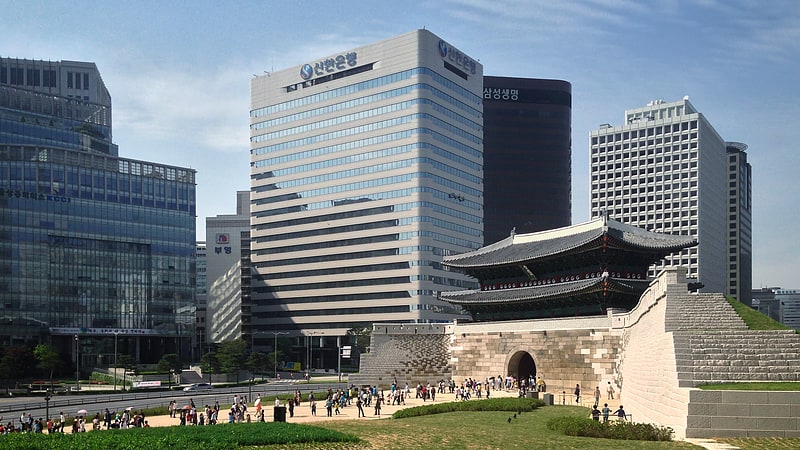
Also known as: 숭례문
Rebuilt city gate from the 14th century. Namdaemun, officially known as the Sungnyemun, is one of the Eight Gates in the Fortress Wall of Seoul, South Korea, which surrounded the city in the Joseon dynasty. It is located in Jung-gu between Seoul Station and Seoul Plaza, with the historic 24-hour Namdaemun Market next to the gate.
The gate, dating back to the 14th century, is a historic pagoda-style gateway, and is designated as the first National Treasure of South Korea. It was once one of the three major gateways through Seoul's city walls which had a stone circuit of 18.2 kilometres and stood up to 6.1 metres high. It was first built in the last year of King Taejo of Joseon's reign in 1398, and rebuilt in 1447.
In 2008, the wooden pagoda atop the gate was severely damaged by arson. Restoration work on the gateway started in February 2010 and was completed on 29 April 2013. The gate was reopened on 4 May 2013.[16]
Address: 40 Sejong-daero, Namdaemunno 4(sa)-ga, 100-094 Jung-gu (중구)
Noryangjin Fisheries Wholesale Market
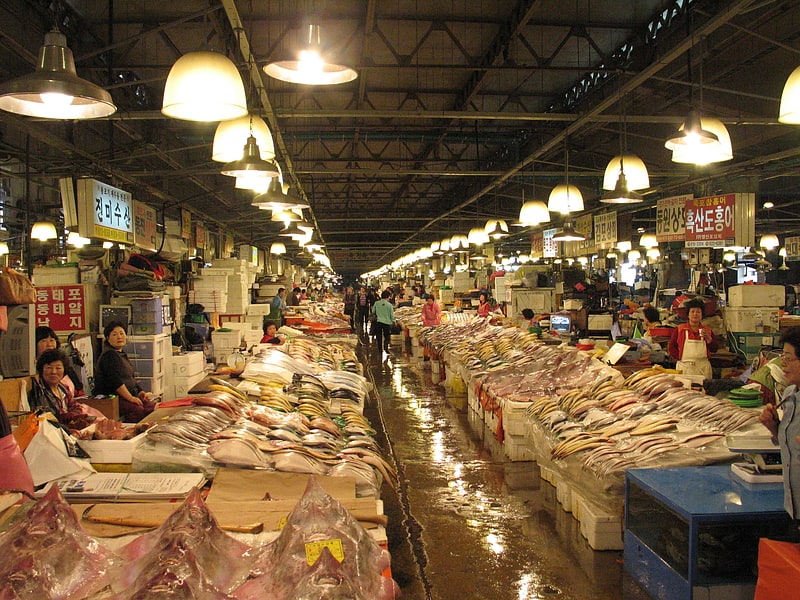
Also known as: 노량진수산시장
Seafood market in Seoul, South Korea. Noryangjin Fisheries Wholesale Market or shortly Noryangjin Fish Market is an extensive farmers fish market in the neighborhood of Noryangjin-dong in Dongjak-gu, Seoul, South Korea. It is located east of 63 Building, and just south of the Han River. Metro line One passes through at Noryangin station near-by. Exit the station at exit 1 and walk under the bridge.
Noryangjin Fish Market was established in 1927 as Gyeongseong Susan (Hangul: 경성수산) on Uijuro(Hangul: 의주로) in Jung-gu near Seoul Station and moved to its current location in central Seoul in 1971.
In a poll of nearly 2,000 foreign visitors, conducted by the Seoul Metropolitan Government in November 2011, stated that visiting the Market is one of their favorite activities in Seoul.[17]
Address: 674 Nodeul-ro, Dongjak-gu, Seoul (동작구)
Gyeonghuigung

Also known as: 경희궁
Historic palace with an adjacent museum. Gyeonghui Palace was a palace located in Seoul, South Korea. It was one of the "Five Grand Palaces" built by the Joseon Dynasty.[18]
Address: 종로구 새문안로 45, 03177 서울특별시 (종로구)
Gwanghwamun

Also known as: 광화문
Imposing gate at Gyeongbokgung Palace. Gwanghwamun is the main and largest gate of Gyeongbokgung Palace, in Jongno-gu, Seoul, South Korea. It is located at a three-way intersection at the northern end of Sejongno. As a landmark and symbol of Seoul's long history as the capital city during the Joseon Dynasty, the gate has gone through multiple periods of destruction and disrepair. The most recent large-scale restoration work on the gate was finished and it was opened to the public on August 15, 2010.[19]
Address: 161 Sajik-ro, Jongno-gu, 03045 Seoul (종로구)
Lotte World

Also known as: 롯데월드
Adventure and water park with an aquarium. Lotte World is a major recreation complex in Seoul, South Korea. It consists of the world's largest indoor theme park, an outdoor amusement park called "Magic Island", an artificial island inside a lake linked by monorail, shopping malls, a luxury hotel, a Korean folk museum, sports facilities, and movie theaters. Opened on July 12, 1989, Lotte World receives 7.3 million visitors each year.[20]
Address: 240, Olympic-ro, Songpa-gu, 138-721 Seoul (송파구)
Bongeunsa Temple
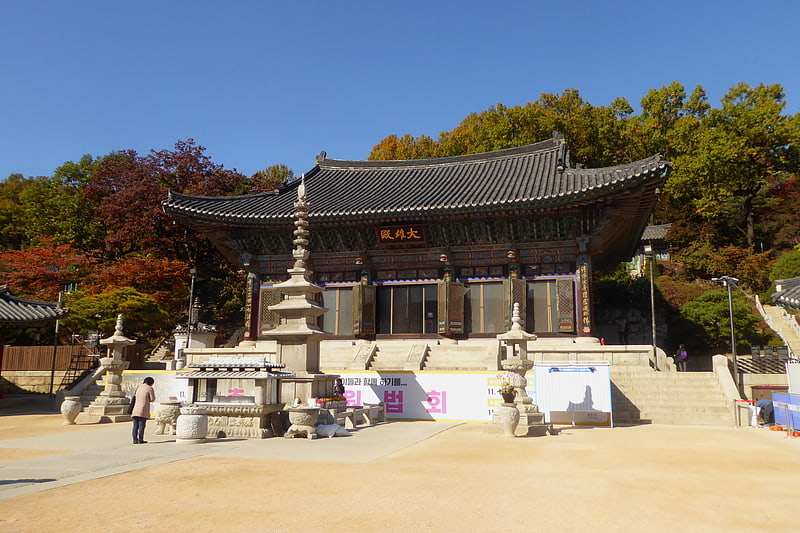
Also known as: 봉은사
Temple. Bongeunsa is a Buddhist temple located in Samseong-dong, Gangnam-gu in Seoul, South Korea. It was founded in 794 during the reign of King Wonseong by State Preceptor Yeonhoe, then the highest ranking monk of Silla. The temple was originally named Gyeonseongsa. It is located on the slope of Sudo Mountain, across the street from the COEX Mall.[21]
Address: 73 Samseong-dong, Gangnam-gu, 135-090 Seoul (강남구)
Seonjeongneung
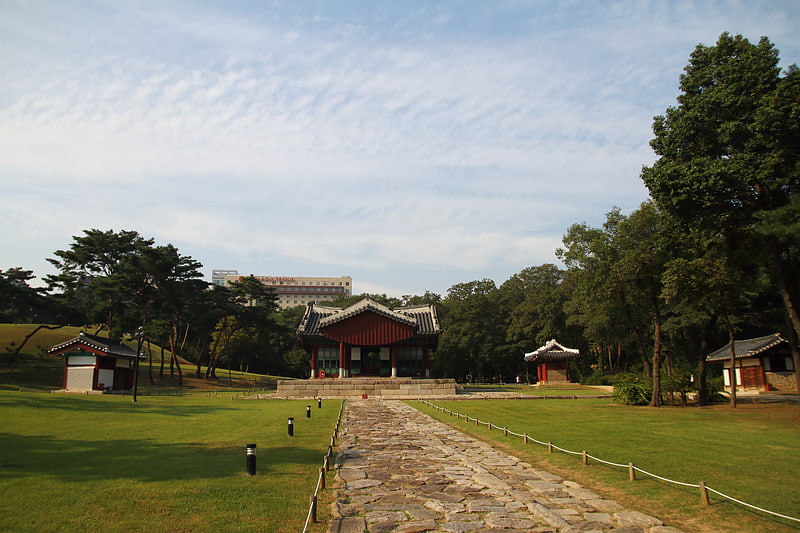
Also known as: 선정릉
Tomb in Seoul, South Korea. The Seonjeongneung is the burial grounds of two Joseon Dynasty kings and one Joseon queen. The westernmost tomb belongs to King Seongjong, the ninth king of the Joseon dynasty. His first wife, Queen Han, died at age 18 and is buried near Munsan, north of Seoul. His second wife, Queen Jeonghyeon, from the Yun family, is buried here because she gave birth to the king's second son in 1506. Queen Jeonghyeon outlived her husband by 35 years and was buried in a splendid tomb to the east of her husband. Her grave has a stone fence encircling the mound, whereas her husband's tomb, on the left, has a retaining wall as well. Statues of civilian and military officials and their horses stand at attention in front of the graves. South of the tombs is a single T-shaped shrine of the type commonly found at Joseon-era royal tombs. There are also several ancillary buildings for storing material used in sacrifices.
Queen Jeonghyeon had a deep interest in Buddhism and founded the nearby temple Bongeunsa.
The other tomb on the site is Jeongneung tomb, located at the easternmost part of the site. This is the burial ground of King Jungjong, the 11th king of Joseon. He was a son of Seongjong, and was originally buried at Goyang near Munsan, north of Seoul. However, his third queen thought it would be better to have him re-interred closer to his father. She expressed a wish to be buried alongside him, but this wish was never carried out, and his tomb stands alone.[22]
Address: 강남구 선릉로100길 1, 06153 서울특별시 (강남구)
Namsan
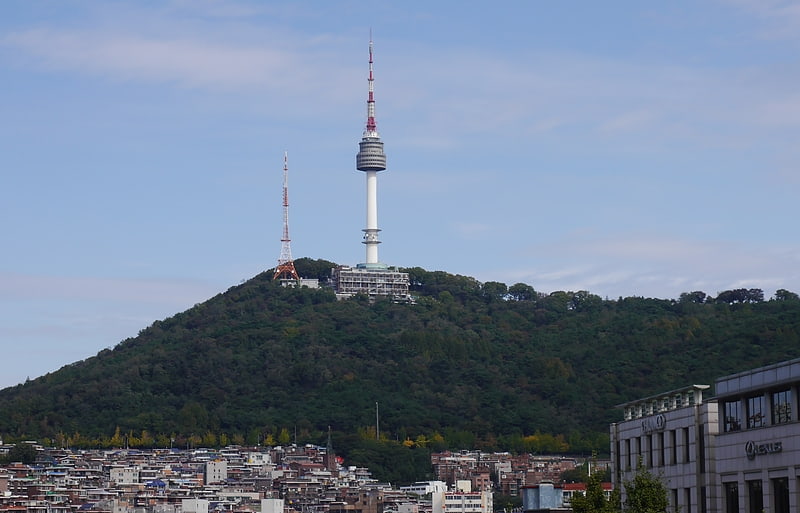
Also known as: 남산
Peak in South Korea. Nam Mountain is a 262-meter -high peak in the Jung-gu district of south central Seoul, South Korea. Although known as Mongmyeoksan, or 목멱산 / 木覓山 in the past, it is now commonly referred to as Mt. Namsan. It offers some hiking, picnic areas and views of downtown Seoul's skyline. The N Seoul Tower is located on top of Mt. Namsan.
The mountain and its surrounding area is Namsan Park, a public park maintained by the city government, which has panoramic views of Seoul. It is also the location of a smoke signal station called Mongmyeoksan Bongsudae' (Mongmyeoksan Beacon Tower, Hangul: 목멱산 봉수대), which was part of an emergency communication system during much of Seoul's history until 1985. From 1925 to 1945 the Shinto shrine known as Chōsen Jingū was situated on Mt. Namsan.
In 2011 a survey was conducted by Seoul Development Institute, which included 800 residents and 103 urban planners and architects. It ranked Mt. Namsan as the most scenic location in Seoul by 62.8 percent of residents and 70.9 percent of the experts surveyed.
The park and the fountain were used as the filming location for Seoul Broadcasting System (SBS)'s drama Lovers in Paris.
Namsan is mentioned in the second verse of South Korea's National Anthem.[23]
Address: 용산구 남산공원길 105, 04340 서울특별시 (중구)
Dongdaemun Market
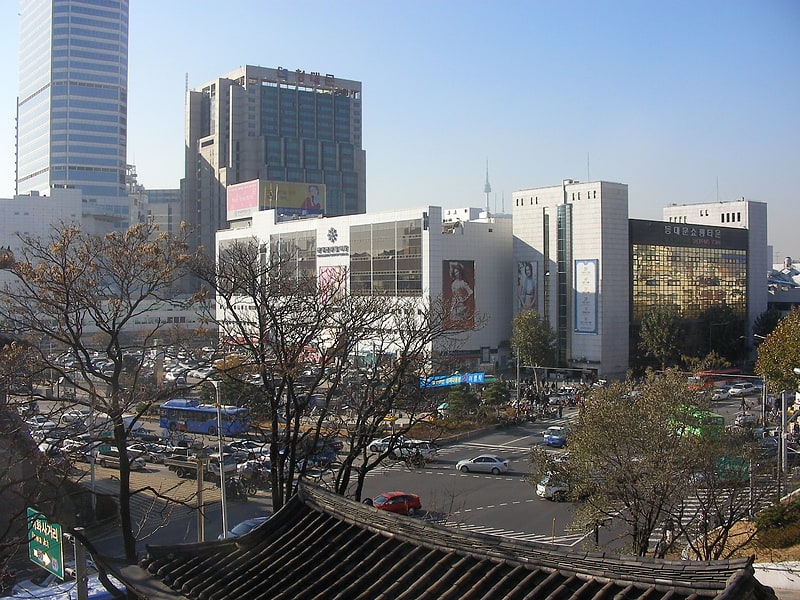
Also known as: 동대문시장
Vast shopping district open 24 hours. Dongdaemun Market or Tongdaemun is a large commercial district in Jongno-gu, Seoul, South Korea. With traditional markets and shopping centers, it is a popular shopping and tourist destination that has been designated a “Special Tourism Zone” since 2002.[24]
Address: Euljiro 6(yuk)-ga, 110-126 Jung-gu (종로구)
Sejongno
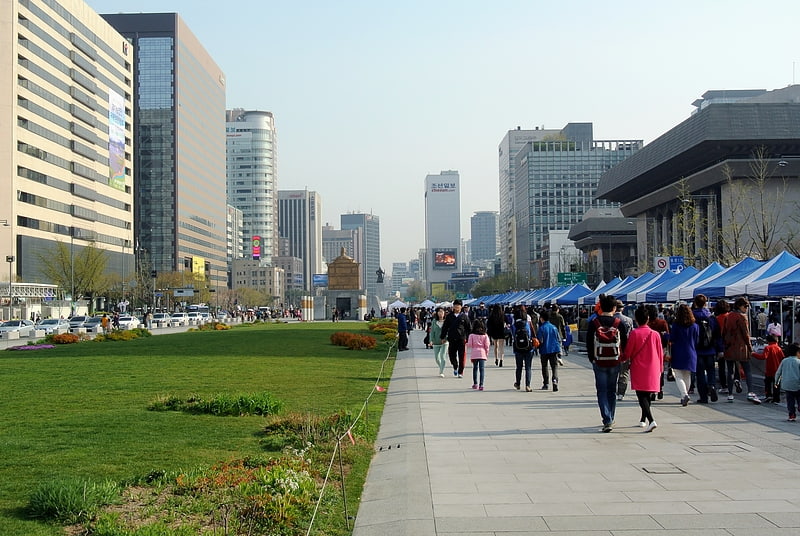
Street. Sejongno, also known as Sejong-daero, is a street that runs through Jongno-gu in downtown Seoul. It is named after King Sejong the Great of Joseon. The street is 600 meters in length, but due to its central location it is of great symbolic importance. It points north to Gwanaksan and Bukhansan, and the Joseon Dynasty palace, Gyeongbokgung. It is also of historical significance as the location for royal administrative buildings and features statues of the Admiral Yi Sun-sin of Joseon Dynasty and King Sejong the Great of Joseon.[25]
Address: 175 세종대로, Seoul (종로구)
Seoul Museum of Art
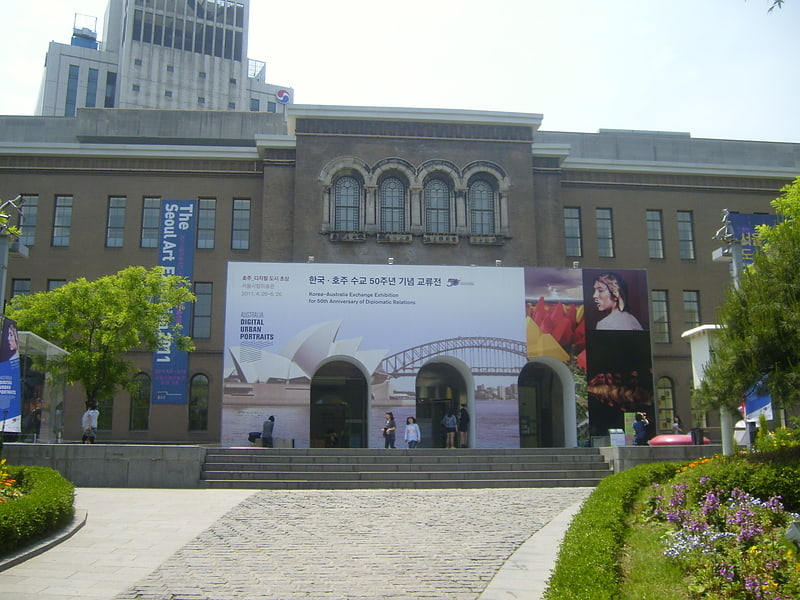
Also known as: 서울시립미술관
Museum in Seoul, South Korea. The Seoul Museum of Art is an art museum operated by Seoul City Council and located in central of Seoul, South Korea.[26]
Address: 61 Deoksugung-gil, Seosomun-dong, 100-110 Jung-gu (중구)
Arts Center

Art center in Seoul, South Korea. The Seoul Arts Center, also referred to as SAC, is an arts complex in the Seocho-gu district of Seoul, in South Korea. It consists of five main buildings: the Opera House, with three auditoriums; the Music Hall, with two concert halls; the Hangaram Art Museum; the Hangaram Design Museum; and the Seoul Calligraphy Art Museum. The Opera House is built in a shape that resembles the traditional Korean bamboo hat called gat.
The center is home to the Korea National Ballet, the Korea National Opera, the Korean Symphony Orchestra, the Korea National Contemporary Dance Company and the National Chorus of Korea.
Established in 1988 to "develop and promote art and culture, and to expand people’s opportunities for cultural enjoyment," the center has developed into the representative art and culture complex in Korea.[27]
Address: 2406 Nambusunhwan-ro, Seocho-gu, 06757 Seoul (서초구)
Blue House
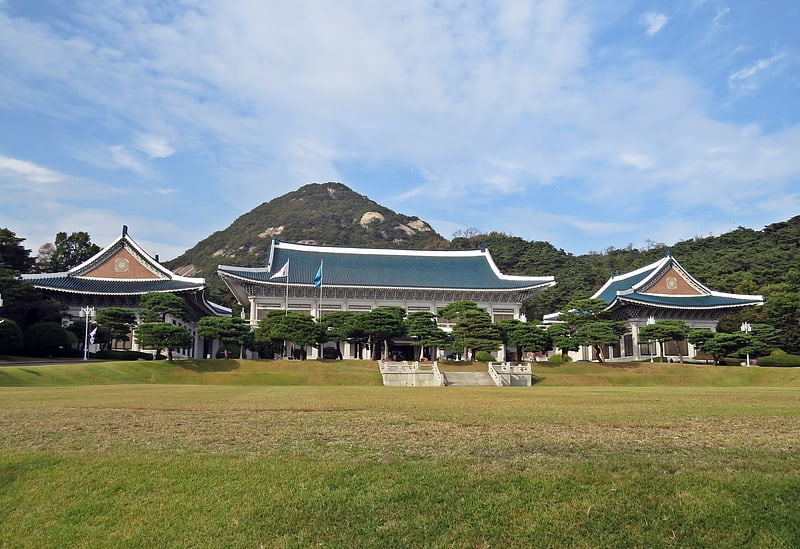
Also known as: 청와대
Official presidential office and residence. Cheongwadae, also known as the Blue House, is the executive office and official residence of the Republic of Korea's head of state, the President of the Republic of Korea, located in Jongno-gu of the capital Seoul. Cheongwadae is in fact a complex of multiple buildings, built largely in the traditional Korean architectural style with some modern architectural elements and facilities. The Blue House is one of the most protected official residences in Asia.
Built upon the site of the royal garden of the Joseon Dynasty (1392–1910), Cheongwadae now consists of the Main Office Hall Bon-gwan (Korean: 본관; Hanja: 本館; lit. "Main House"), the Presidential Residence, the State Reception House Yeongbin-gwan (Korean: 영빈관; Hanja: 迎賓館; lit. "Welcome-Guest House"), the Chunchu-gwan (Korean: 춘추관; Hanja: 春秋館; lit. "Spring-Autumn House") Press Hall, and the Secretariat Buildings. The entire complex covers approximately 250,000 square metres or 62 acres.[28]
Address: Seoul, 1 Cheongwadae-ro, Jongno-gu
Seodaemun Independence Park
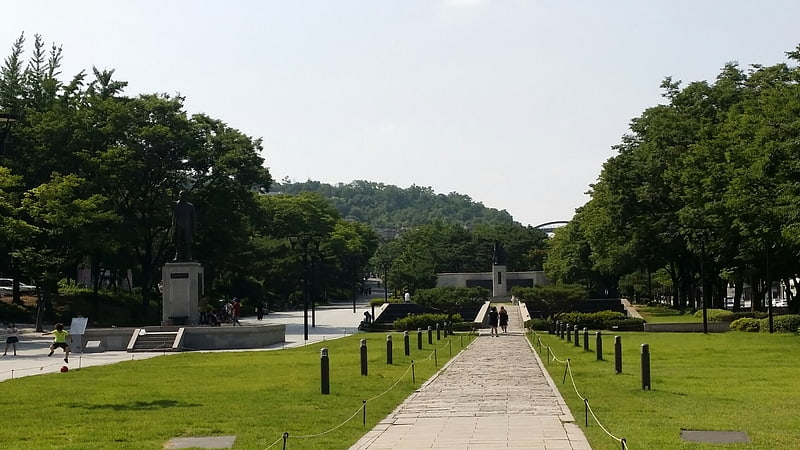
Also known as: 서대문독립공원
Park in Seoul, South Korea. Seodaemun Independence Park is an educational and cultural park located in Hyunjeo-dong, Seodaemun-gu, Seoul, South Korea. The park contains various monuments and buildings, most notably the Seodaemun Prison Museum. The park receives nearly half a million visitors annually.[29]
Address: 서대문구 통일로 251, 120-080 서울특별시 (서대문구)
COEX Aquarium
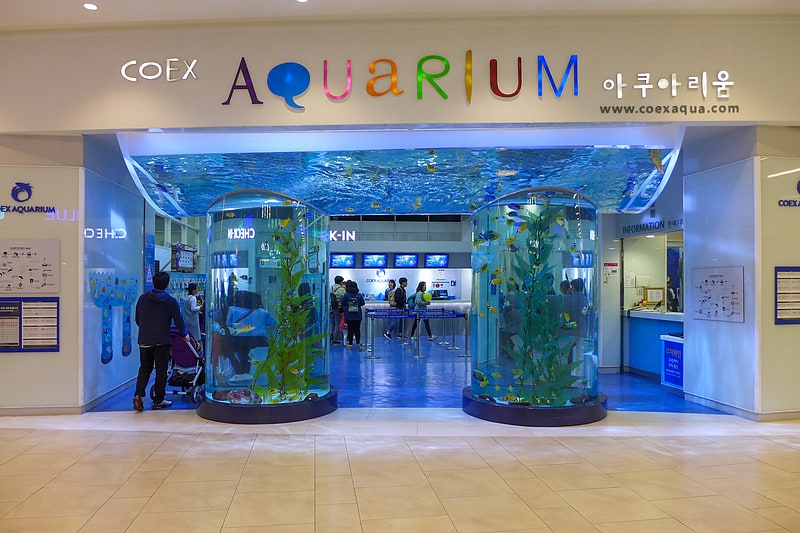
Also known as: 코엑스 아쿠아리움
Penguins, marine mammals and Korean fish. The COEX Aquarium in Gangnam district, Seoul, is one of South Korea's Public Aquariums. The aquarium is housed within the COEX mall, which is, itself, part of the larger COEX Convention & Exhibition Center. The aquarium opened in 2000.[30]
Address: 513 Yeongdong-daero, Samseong-dong, 135-091 Gangnam-gu (강남구)
Jogyesa
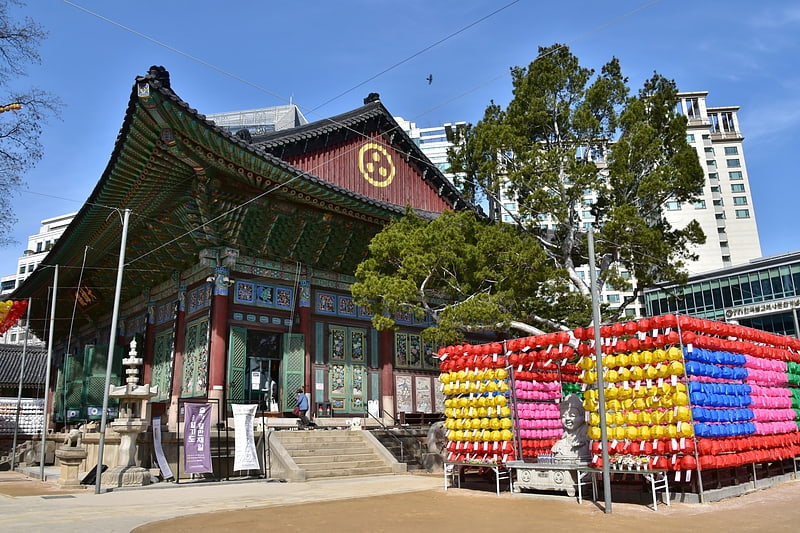
Also known as: 조계사
Main Buddhist temple and grand main hall. Jogyesa is the chief temple of the Jogye Order of Korean Buddhism. The building dates back to the late 14th century and became the order's chief temple in 1936. It thus plays a leading role in the current state of Seon Buddhism in South Korea. The temple was first established in 1395, at the dawn of the Joseon Dynasty; the modern temple was founded in 1910 and initially called "Gakhwangsa". The name was changed to "Taegosa" during the period of Japanese rule, and then to the present name in 1954.
Jogyesa is located in Gyeonji-dong, Jongno-gu, in downtown Seoul. Natural monument No. 9, an ancient white pine tree, is located within the temple grounds. Jogyesa Temple is located in one of the most popular cultural streets in Seoul, Insa-dong, near the Gyeongbokgung Palace.[31]
Address: 45 Gyeonji-dong, Jongno-gu, 110-170 Seoul (종로구)
National Palace Museum of Korea
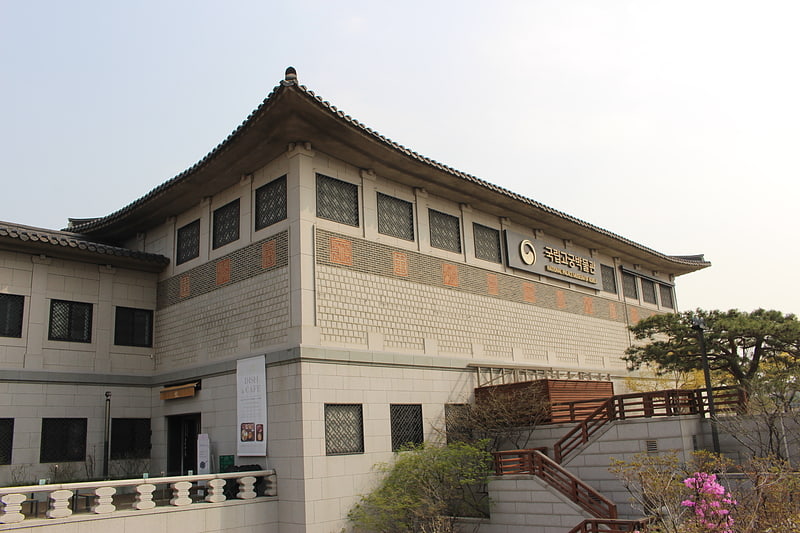
Also known as: 국립고궁박물관
Collection of Joseon Dynasty artifacts. The National Palace Museum of Korea is a national museum of South Korea located in Gyeongbokgung Palace, Seoul.[32]
Address: 12 Hyoja-ro, Cheongunhyoja-dong, 110-030 Jongno-gu (종로구)
Art Center Nabi
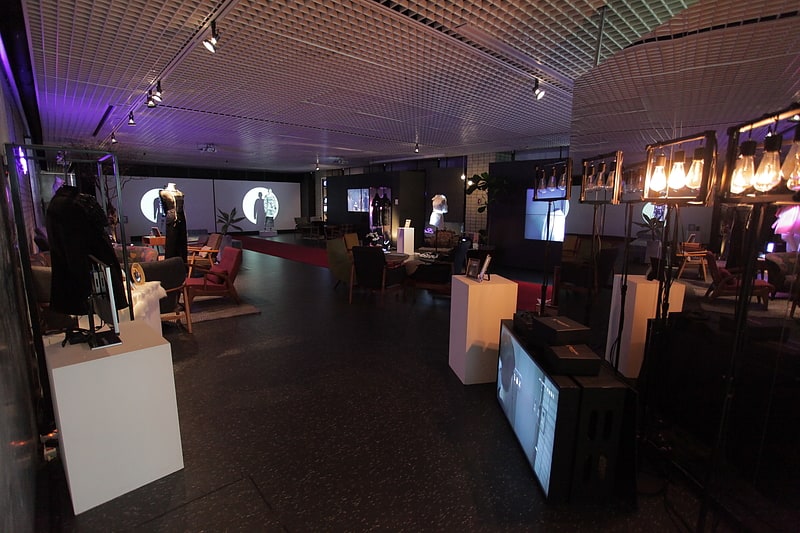
Also known as: 아트센터나비
Museum in Seoul, South Korea. The Art Center Nabi is an art museum in Seorin-dong, Jongno-gu, Seoul, South Korea. It was relocated to the 4th floor of SK building of SK Group in 2000 and reborn as digital art museum.
Art Center Nabi has produced and exhibited various kinds of digital art at the intersection of arts and technology.[33]
Address: 99 Seorin-dong, 110-110 Jongno-gu (종로구)
Naksan
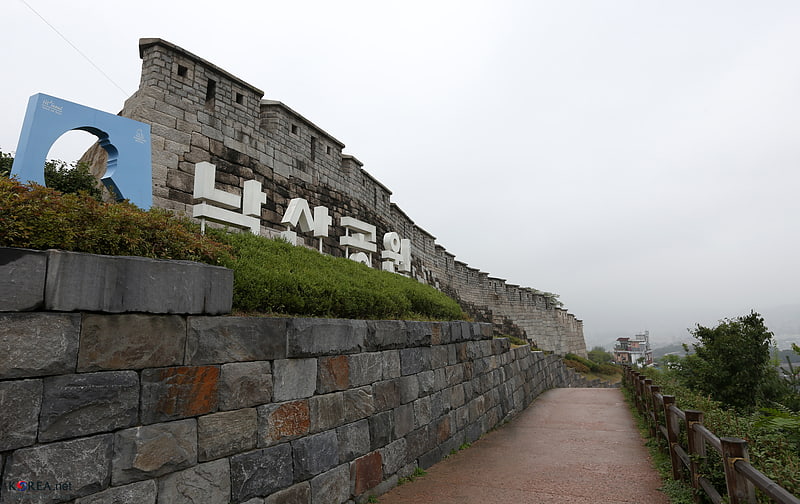
Naksan Mountain or Mount Naksan is a peak, 125 metres high, in the Jongno-gu district of Seoul, South Korea. The mountain is well known for the panoramic views of downtown Seoul as is Namsan.
The mountain and its surrounding area is Naksan Park, which is a public park maintained by the city government from 2002. The park was used as the filming location for some dramas.[34]
Address: 종로구 낙산길 54, 110-809 서울특별시 (종로구)
Gyeongcheonsa Pagoda
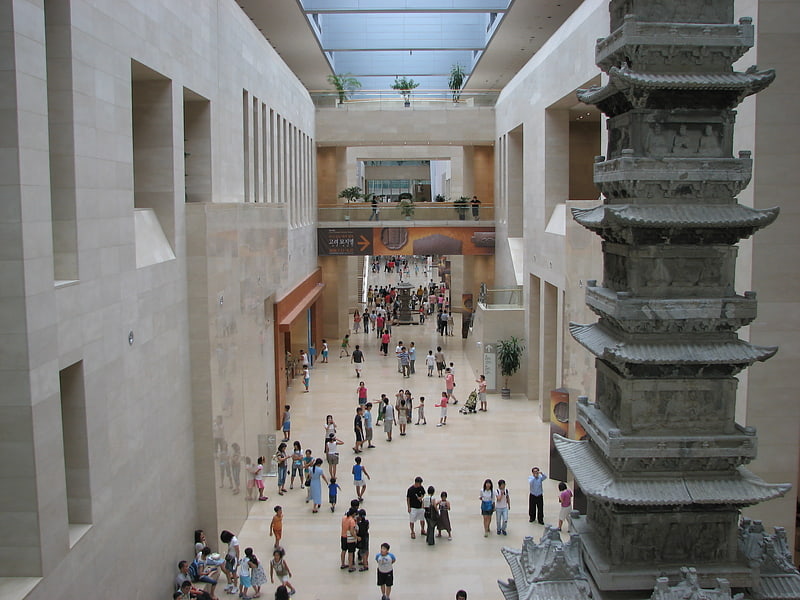
Gyeongcheonsa Pagoda is National Treasure of Korea No. 86. It was designated by the South Korean government on December 20, 1962.
An inscription on the first story of the pagoda states that it was erected in the fourth year of King Chungmok in 1348. The pagoda was first placed at the now-lost Gyeongcheonsa Temple which sat at the foot of Mt. Buso in Gwangdeok-myeon, Gaepung-gun, Gyeonggi-do Province. During the Japanese occupation of Korea, the pagoda was taken to Japan. In 1960, the pagoda was returned and placed on the grounds of Gyeongbokgung Palace. Today, the pagoda stands in one of the main halls of the National Museum of Korea.
The pagoda stands 13.5 m in height and is ten storeys tall. However, because of the three-tiered foundation, it is a common mistake to believe that the pagoda has thirteen storeys. Unlike most Goryeo-era pagodas, this pagoda is made from marble. The preferred material of Korean sculptors was generally granite. The later Joseon-era Wongaksa Pagoda is stylistically very similar and is believed to have been heavily influenced by the Gyeongcheonsa Pagoda.
Gyeongcheonsa Pagoda sits on a three-tiered foundation which projects in four directions like a cross. The first three storeys of the pagoda share the same shape as the foundation. Each panel of this tiered foundation is carved with Buddhas, Bodhisattvas, flowers, and arabesque patterns.
The remaining storeys are square in shape and share intricate detailing which tries to create the illusion that the marble pagoda is made from wood. Each remaining storey has railings, a hip-and-gabled roof, eaves, and carvings made to suggest that each roof is tiled.
This pagoda is very valuable because it preserves the Goryeo-era wooden architectural style that has been mostly lost. According to the South Korean Cultural Heritage Administration, this pagoda is one of the finest examples of Korean stone work and is of high artistic value.[35]